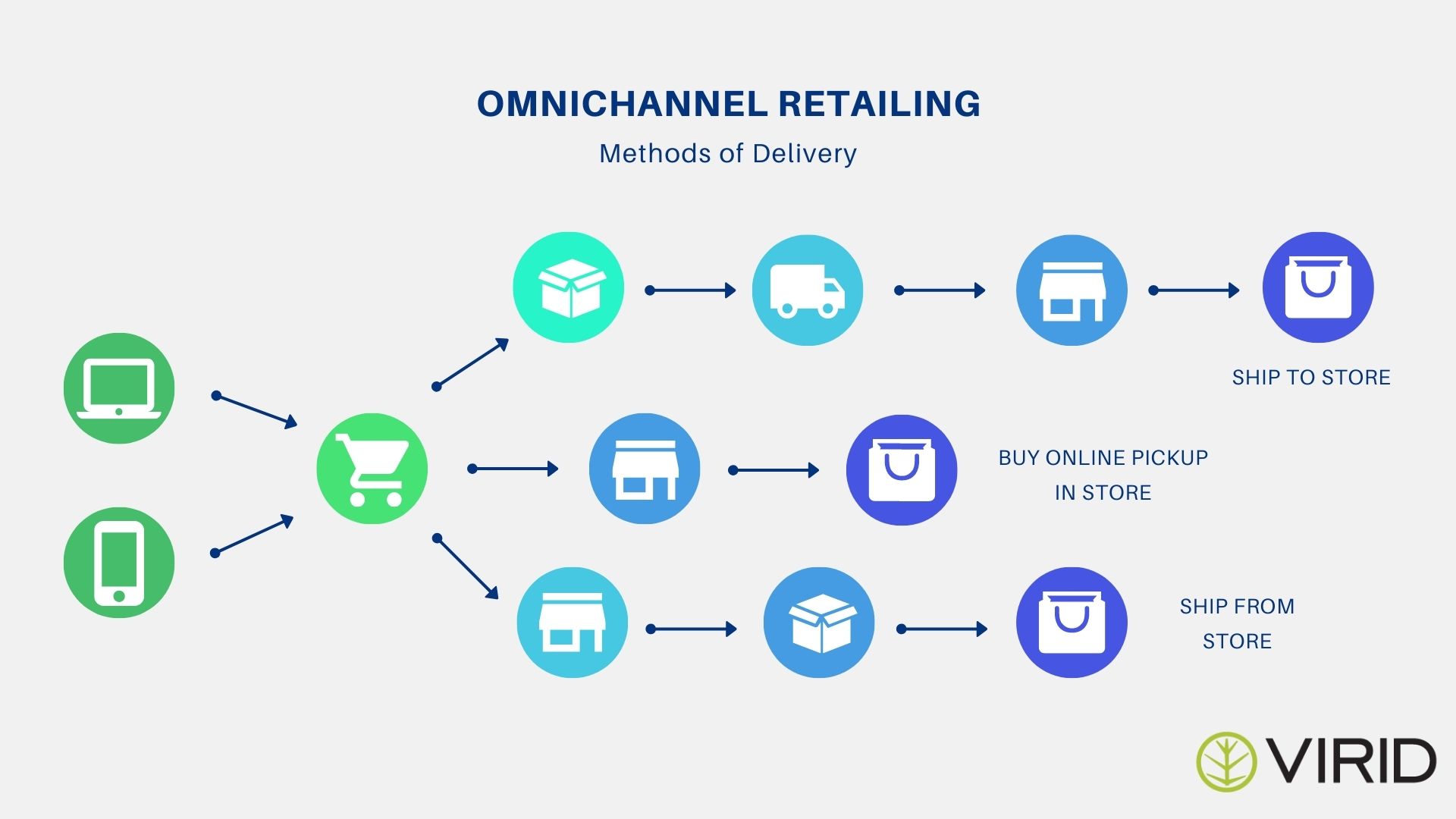
The acronyms of omnichannel and their impact
ISPU, BOPIS, STS, and SFS. It’s a lot of acronyms and what do they all mean? Well, they are omnichannel retail options. Omnichannel offers ways to streamline the shopping experience for consumers with various delivery methods.
These methods make it easier to get your product to your consumer. We live in a world where retailers are part of the convenience business and customer care is just as important, if not more, as the products you are selling. So how does omnichannel accomplish this? Omnichannel delivery provides flexibility to your consumers and can lead to a higher customer satisfaction rating.
In the retail industry, ISPU and BOPIS are often interchangeable. ISPU and BOPIS allow a customer to purchase an item through your website or app for pickup at their local store. These options are great for customers who don’t want or don’t have the time to browse in store but want an item faster than having it shipped to them. This still gives customers the option to try it on or view it in person to see if they are satisfied before returning home.
When completing a ship to store order, instead of sending a customer’s purchase to their home, it is shipped to their nearby brick-and-mortar store. Usually this option offers free shipping to the consumer. This option is highly requested for items that are normally not carried in store. Both BOPIS and STS still drive customers to your physical locations. Often customers will still browse and end up completing an additional purchase. If their order doesn’t work out, they have sales staff available to not only to complete their return, but to help them find an alternative product in the moment.
Ship from Store (previously called Fulfill from Store) occurs when employees package and send out orders top customers that were placed online. This is an efficient way to make sure that a customer can purchase inventory no matter where it is located. It can also reduce shipping costs for retailers. Allocation can send orders that are in a store’s region to fulfill, insuring they are delivered on time and less expensive to ship.
.jpg?width=643&name=Omnichannel%20Infographic%20(1).jpg)
Remember, the priority for these systems is to make a customer’s shopping experience easier. If the system isn’t integrated well from site to store, your customers will feel they wasted extra effort.
When omni goes wrong:
- If an item is showing as available for BOPIS to a customer, but inventory hasn’t updated that the store has sold all of this SKU. Make sure your inventory updates as close to real time as possible.
- If SFS doesn’t account for a store’s shipping abilities. It may be hard for a store to easily package larger items, such as a heavy vase, and ensure they reach the customer safely.
- If omni doesn’t account for staffing needs. Store employees will able to process omni orders when they aren’t busy with in-store customers. Make sure your payroll and order quantities allow for staff to fulfill these without overwhelming them.
Preparing for omnichannel requires integrations on various levels of your brand and accounting for the needs of both your customers and employees. Your system should be robust to allow for fill time, staffing needs, and human error. If the system accounts for needed logistics, you will be one step ahead.
Looking to integrate omnichannel options to your ecommerce site? Let's get your project started!

